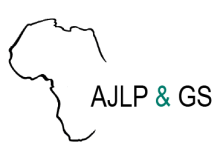Resource information
ABSTRACT Context and background In Ghana the predominant method for performing cadastral surveys is through the use of Global Navigation Satellite Systems (GNSS) static surveys and to a lesser extent Total Stations. This work investigates the use of Unmanned Aerial Vehicles (UAV) for performing cadastral surveys and investigate the effects of varying sensor types, flying height, image overlap and number of ground control points in the acquisition of imagery for producing acceptable cadastral maps for use in Ghana.Goal and Objectives:The main aim of this study is therefore to assess some defining parameters for the use of UAV surveys for cadastral mapping and hence suggest some guidelines for the geomatic community in Ghana. The objectives of this work are as follows: i. To determine in generic terms UAV types that are appropriate for cadastral mapping in Ghana ii. To identify some threshold flight parameters necessary for obtaining desirable accuracies for cadastral mapping from UAV data iii. To investigate the optimal number of ground control points necessary for accurate cadastral mapping work.Methodology:A quantitative method was adopted where two sources of primary data were used. The control dataset was obtained by using static GNSS methods to obtain the boundary coordinates of the 20-acre study area. This control data was compared to 20 different data sets of boundary coordinates obtained from UAV imagery resulting from a permutation of different UAV types, varying flight heights, forward/side overlap and number of GCP’s used for georefencing.Results:Optimal results were achieved when georeferenced with 8 Ground Control Points (GCP's) with average Root Mean Square Error (RMSEX)and RMSEY values of 1.383 ft and 1.034 ft respectively. There was no marked improvement in increasing GCP's to 12 thus a minimum of 1 GCP per 2.5 acres is suggested for georeferencing to achieve the ± 3 feet required tolerance stipulated by Surveying and Mapping Division of Ghana. The results suggest that UAV’s with sensor resolutions of 12 mega-pixels (MP) or greater are suitable and that a minimum forward lap of 70% is adequate for obtaining imagery suitable for cadastral mapping.


